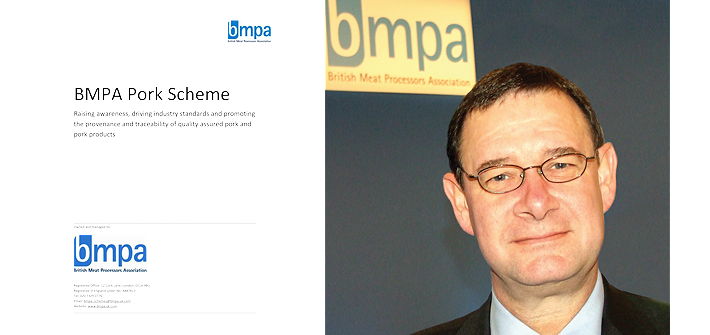The director of the British Meat Processors’ Association (BMPA), Stephen Rossides, discusses the organisation’s recently revised pork scheme that became auditable from August 1.
The BMPA owns and manages quality standards under an umbrella scheme, the BMPA Pork Scheme – originally launched as the Charter Standards in 1983 – with modules covering fresh pork, and a range of pork products including bacon, pork sausage, and ham and cooked pork.
Each module will be known as “BMPA Quality Assured Bacon”, “Sausage” and so on. Pork and pork products produced to the quality standards carry the Red Tractor mark.
Following the most comprehensive review yet carried out by a review team of the BMPA Pigmeat Technical Advisory Committee, chaired by Andrew Caines of Cranswick Country Foods, the updated standards were launched in May of this year and became auditable from August 2015.
The key objective of the review was to ensure that the standards under the BMPA Pork Scheme and its modules meet the changing needs of consumers, retailers and manufacturers. It also aimed to rationalise and simplify the scheme rules, guidance layout and terminology across the various modules.
Throughout, the review team strived to strike the right balance between the need for the scheme to be aspirational and challenging, while also being practical and achievable at operational level.
Front of mind during the process were the recommendations of the Elliott Review into the Integrity and Assurance of Food Supply Networks, commissioned by the coalition Government following the horsemeat episode. As a result, the scheme’s audit arrangements have been strengthened by increasing the robustness of provenance and traceability in the industry and extending the scope of audits to include external cold stores. Scheme participants must demonstrate an understanding of their supply chains and maintain a schedule of traceability audits that incorporates a mass balance exercise as part of the scheme’s unannounced audit programme.
Audit frequency is now common across the modules, comprising one announced audit and one unannounced audit each year, carried out by independent UKAS-accredited certification bodies. Additional audits may be required where critical or major non-conformances occur.
Product quality is integral to the BMPA Pork Scheme and remains a cornerstone. But there are changes. For example, the review team took the view that the previous product monitoring evaluation for ham and bacon, that involved 10 random samples of finished product being inspected at the time of the surveillance audit, added little value to the scheme. This has now been replaced with a requirement to monitor quality attribute specifications that are formally agreed between the manufacturer and its customer, thus ensuring that the customer’s specifications are met.
The updated scheme also includes a requirement for the use of CCTV in all areas of the plant affecting animal welfare, as well as requirements for adequate facilities for washing and disinfecting hauliers’ vehicles before they leave a site.
I should stress that while the updated scheme is owned and managed by the BMPA, it’s not a requirement for a scheme participant to be a BMPA member (though new members are welcome!). So any companies that are interested in joining the scheme are invited to contact the BMPA for more information.
I’m immensely proud of what the review team has achieved through this very comprehensive exercise, and I commend the BMPA Pork Scheme to customers, retailers, manufacturers and consumers.
I was also delighted that during his address to the recent BMPA annual conference, Professor Chris Elliott also commended the scheme.




